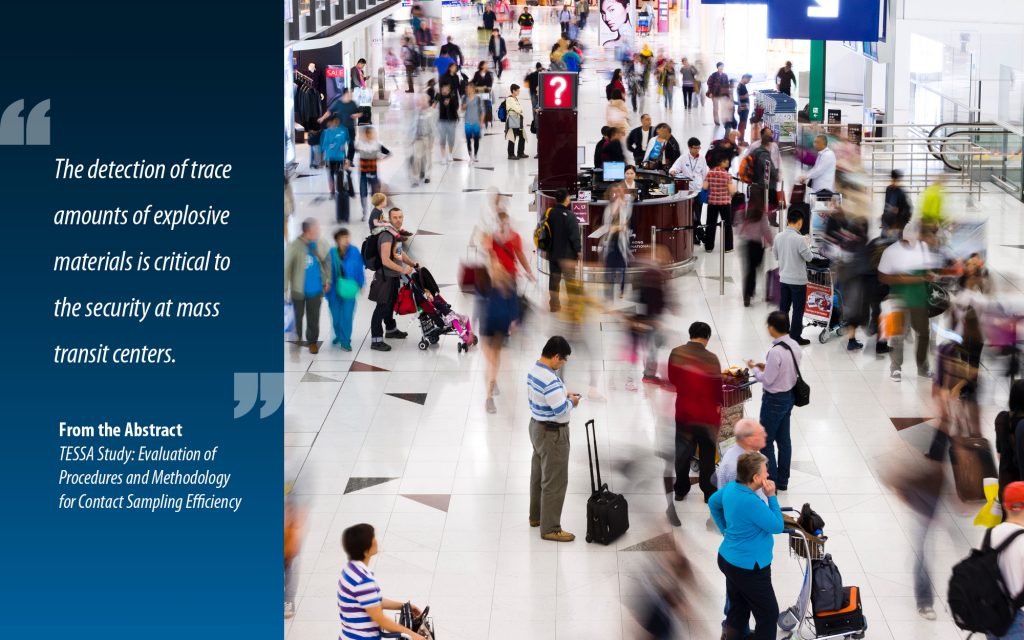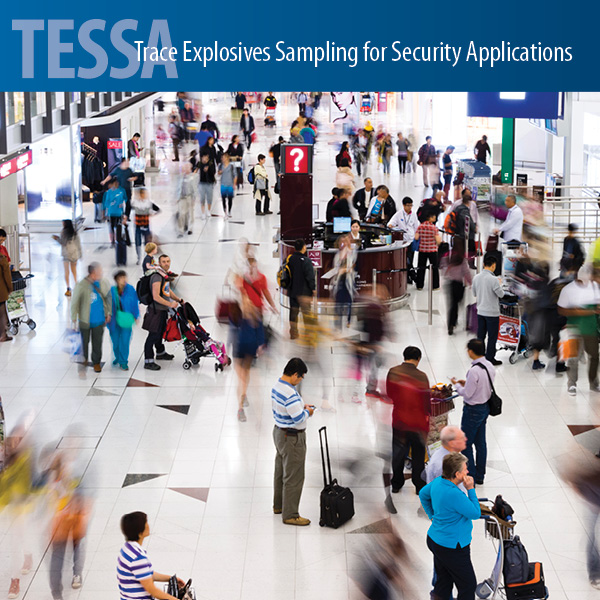
Abstract: The detection of trace amounts of explosive materials is critical to the security at mass transit centers (e.g., airports and railway stations). In a typical screening process, a trap is used to probe a surface of interest to collect and transfer particulate residue to a detector for analysis. The collection of residues from the surface being probed is widely viewed as the limiting step in this process. A multi-institutional study was performed to establish a methodology for the evaluation of sampling media collection efficiencies. Dry deposited residues of 1,3,5-trinitroperhydro-1,3,5-triazine (RDX), C-4 (an RDX-based explosive), and pentaerythritol tetranitrate (PETN) were harvested from acrylonitrile butadiene styrene (ABS) plastic, ballistic nylon (NYL), and uncoated aluminum surfaces using muslin, Texwipe cotton, and stainless-steel mesh traps. Transfer and collection efficiencies of the sample media were calculated based on liquid chromatography-mass spectrometry analysis. Dry transfer efficiencies (DTE%) to all tested surfaces were greater than 75%, with transfer to ABS plastic being the lowest. Collection efficiency (CE%) varied significantly across the traps and the surfaces, yet some conclusions can be drawn; nylon had the lowest CE% for all cases (∼10%), and the stainless steel mesh had the lowest CE% for the evaluated traps (∼20%). Though the testing parameters have been standardized among the participants to establish a framework for an independent comparison of contact sampling media and surfaces, substantial variations in the DTE% and the CE% were observed, suggesting that other variables can affect contact sampling.
View paper on Science Direct here
Authors: Igor V. Novosselov a, Caralyn A. Coultas-McKenney b, Leonid Miroshnik c, Kalyan Kottapalli a, Byron Ockerman a, Tara E. Manley d, Myles W. Gardner d, Richard Lareau e, 1, John Brady e, Melissa Sweat f, Alan R. Smith d, Michael J. Hargather b, Stephen Beaudoin c
a Department of Mechanical Engineering, University of Washington, Seattle, WA, USA
b New Mexico Tech, Socorro, NM, USA
c School of Chemical Engineering, Purdue University, West Lafayette, IN, USA
d Signature Science LLC, Austin, TX, USA
e U.S. Department of Homeland Security, Transportation Security Laboratory, Atlantic City, NJ, USA
f Oak Ridge Institute for Science and Education Postdoctoral Fellow at the U.S. Department of Homeland Security, Science & Technology Directorate, Transportation Security Laboratory, Atlantic City International Airport, NJ, USA

